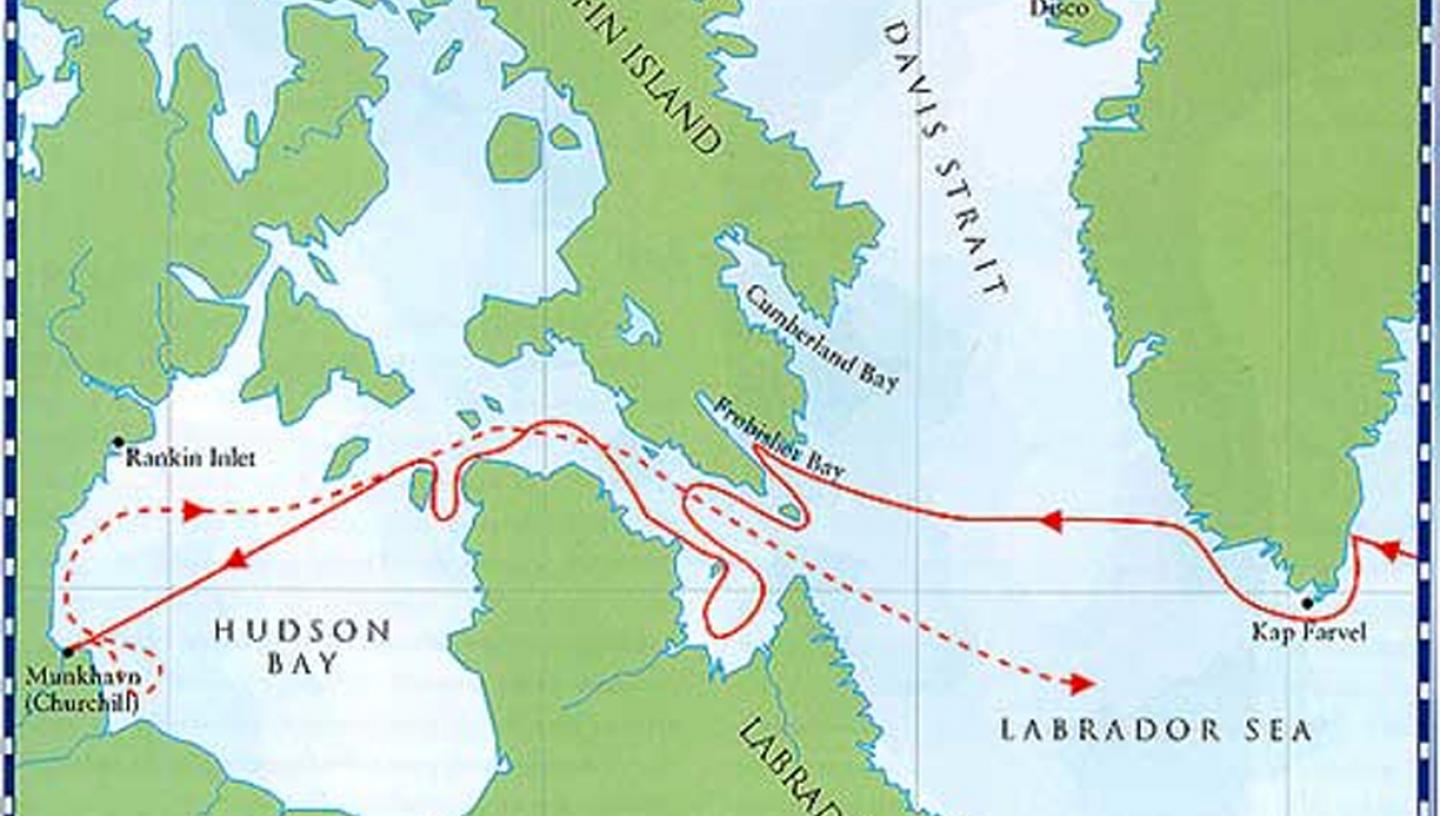
Jens Munk North-West Passage expedition 1619–20
Jens Munk was a captain in the Danish navy in the 17th century. He unsuccessfully went in search of the North-West Passage in 1619.
In 1619 Munk was sent by King Christian IV of Denmark and Norway to find the North-West Passage – the sought-after seaway across the Arctic, linking the Atlantic and Pacific Oceans, which would open a direct trade route between Europe and Asia. Unfortunately the expedition was a disaster and all but three of the crew perished.
Stuck in ice
Munk’s ships, the Enhiörningen (Unicorn) and the Lamprenen (Lamprey) entered Hudson Bay, north-east of Canada, after a tortuous journey through Hudson Strait. Not knowing that ice would close the strait as winter advanced, Munk sailed to the west coast of the bay and was forced to winter in the estuary of the Churchill River, where his ships were frozen in. The winter was a disaster. Scurvy broke out among the crew and all but three of them died; their bodies lying rotting as the dwindling and weakened sailors lacked the strength to bury their dead companions.
When the ice finally receded the following spring, Munk’s journal recalls the horror of stripping the Enhiörningen of supplies for the Lamprenen’s return to Denmark. He wrote: ‘We were obliged first of all to throw overboard the dead bodies, which were then quite decomposed, as we could not move about or do anything there for bad smell and stench.’
Three survivors
Incredibly the three remaining men made it home but their experience was enough for the Danes to abandon any further expeditions to find the North-West Passage. Nearly a hundred years later, explorer James Knight arrived at the harbour where Jens Monk and his crew had been trapped. There they found the bones of many of the Danish crew.
Scurvy, consumption and cannibalism - just some of the risks of going in search of a North-West Passage. #DeathInTheIce